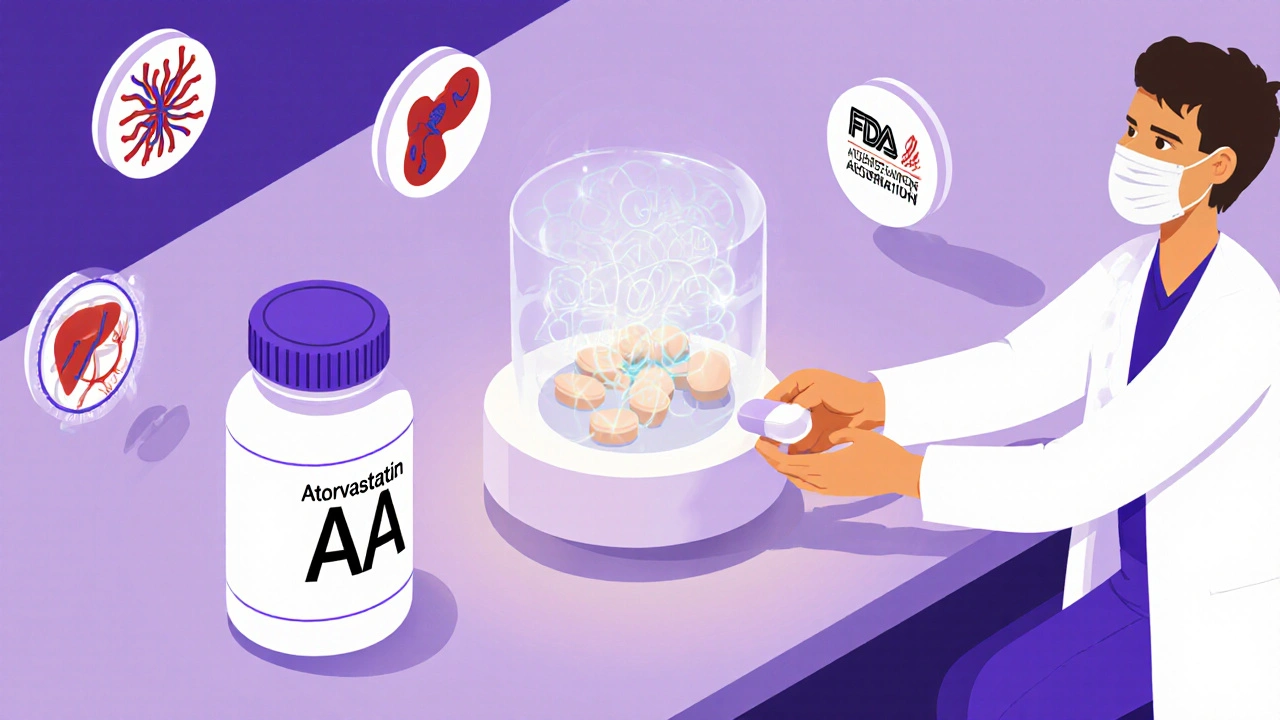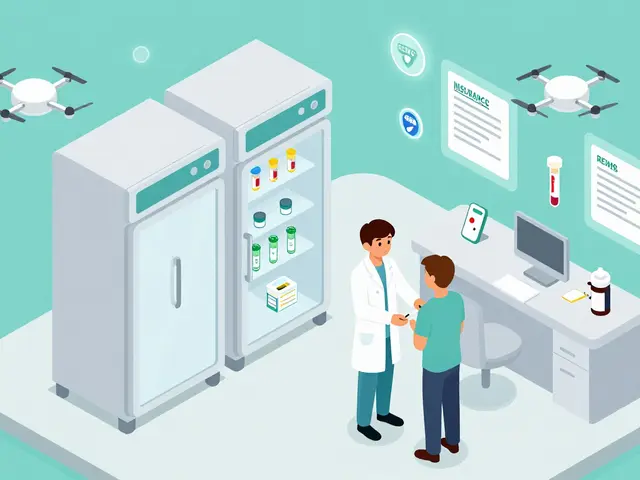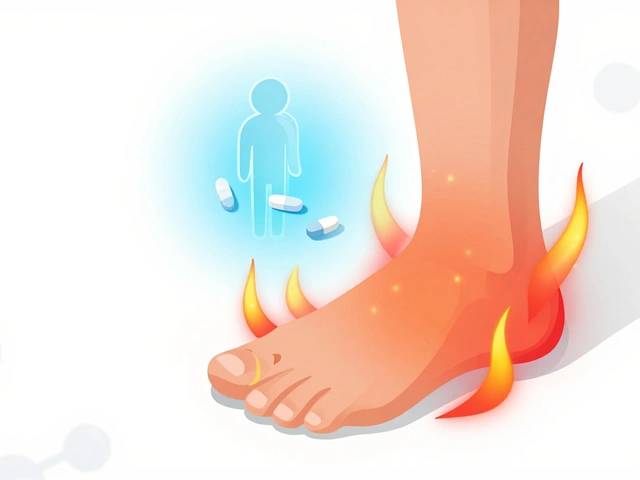Therapeutic Equivalence Codes (TE Codes) Explained: How Generic Drugs Are Approved and Substituted

When you pick up a prescription, you might get a pill that looks completely different from the one your doctor prescribed. That’s not a mistake. It’s likely a generic version-and it’s legally allowed to replace the brand-name drug because of something called a Therapeutic Equivalence Code, or TE Code. These codes are the reason millions of Americans save hundreds of dollars every year on prescriptions without risking their health. But how do they actually work? And why do some people still feel like the generic doesn’t work the same?
What TE Codes Really Mean
Therapeutic Equivalence Codes are assigned by the U.S. Food and Drug Administration (FDA) and published in the Approved Drug Products with Therapeutic Equivalence Evaluations, commonly known as the Orange Book. These codes tell pharmacists whether a generic drug can be swapped for the brand-name version without changing how well it works or how safe it is. The system isn’t just a suggestion-it’s the law. All 50 states use TE Codes to determine when pharmacists can automatically substitute a generic drug unless the doctor says no. That’s why you’ll often see a generic on your receipt even if you didn’t ask for it. TE Codes are made up of two or three letters. The first letter is the most important: A means the drug is therapeutically equivalent to the brand. B means it’s not. So if you see an “AA” or “AP” code, you’re looking at a generic that’s been tested and approved as a direct substitute.How the FDA Decides If a Generic Is Equivalent
Getting an “A” rating isn’t easy. The FDA doesn’t just check the active ingredient. They require proof that the generic meets three strict criteria:- Pharmaceutical equivalence: Same active ingredient, strength, dosage form, and route of administration.
- Bioequivalence: The body absorbs the generic drug at the same rate and to the same extent as the brand. This is proven through clinical studies measuring blood levels of the drug over time.
- Clinical equivalence: The drug works the same way in real patients-same benefits, same side effects, same safety profile.
What the Letters After “A” Actually Mean
You might see codes like AA, AN, AP, or AT. These aren’t random. They tell you the exact formulation type:- AA: Oral solid dosage (like tablets or capsules) with no bioequivalence concerns.
- AN: Injectable solution.
- AP: Powder for injection.
- AT: Topical cream or ointment.

Where TE Codes Fall Short
TE Codes are powerful, but they’re not perfect. The system works great for simple pills-like blood pressure or cholesterol meds. But it struggles with complex drugs. Take inhalers. Two generic asthma inhalers might have the same active ingredient and meet bioequivalence standards. But if the propellant or spray mechanism is slightly different, the drug might not reach the lungs the same way. In 2019, the FDA pulled TE ratings for several generic budesonide inhalers after reports of inconsistent dosing. Narrow therapeutic index (NTI) drugs are another problem. These are medications where even tiny differences in blood levels can cause serious side effects or make the drug useless. Warfarin (a blood thinner) and levothyroxine (a thyroid hormone) fall into this category. While the FDA gives many of these drugs “A” ratings, some patients report feeling worse after switching-even when the TE code says they’re identical. A 2022 study found 12.7% of patients noticed changes after switching between TE-rated generics. Clinical tests showed no difference, but the perception matters. For some, it’s enough to ask their doctor to block substitution.Why TE Codes Save Billions
The real power of TE Codes isn’t just science-it’s economics. Generic drugs with TE ratings cost 80-85% less than their brand-name counterparts. Since 1995, this system has saved the U.S. healthcare system over $2.2 trillion, according to former FDA Director Dr. Janet Woodcock. In 2022, over 90% of all prescriptions filled in the U.S. were for generics. That’s 6 billion prescriptions a year. Without TE Codes, pharmacists wouldn’t have the legal or scientific backing to make those swaps. Insurance companies and pharmacies rely on them to keep costs down. Pharmacy benefit managers (PBMs), hospitals, and even Medicaid programs use TE Codes to design formularies. If a generic doesn’t have an “A” rating, it’s often excluded from coverage. That pushes manufacturers to meet the FDA’s standards-or stay off the market.
What Pharmacists See Every Day
For pharmacists, TE Codes are part of the daily routine. They check the Orange Book-either online or through their pharmacy software like Epic or Cerner-before dispensing a generic. Most systems flag non-equivalent drugs automatically. A 2022 survey by the National Community Pharmacists Association found 91% of pharmacists have high confidence in TE-rated substitutions. Pharmacy technicians say verifying a TE code adds less than 30 seconds to each prescription. But it’s not always smooth. Sometimes, state formularies lag behind the latest Orange Book updates. In 2022, about 3.2% of substitutions were affected by these delays. The FDA’s help desk gets around 1,200 TE-related questions each month, and most are resolved within two business days.What Patients Should Know
If you’ve ever switched from a brand to a generic and felt “off,” you’re not alone. But here’s the catch: studies show most of those feelings aren’t due to the drug not working-they’re due to expectation. People expect generics to be weaker. That mindset can create real symptoms, even if the drug is identical. Still, if you’re on a drug like warfarin, levothyroxine, or seizure medication, talk to your doctor before switching. Even if the TE code says it’s safe, your body might respond differently. Ask for a consistent brand or generic. Many doctors will write “Dispense as Written” or “Do Not Substitute” on the prescription if you’re concerned. For most people-those taking statins, antidepressants, or diabetes meds-switching to a TE-rated generic is safe, effective, and smart. The FDA’s data shows no difference in hospitalizations or adverse events between brand and TE-rated generics.The Future of TE Codes
The FDA is working to improve the system. In 2022, they released updated guidance on how to evaluate therapeutic equivalence, especially for complex drugs. A pilot program is now testing whether real-world patient data can help refine TE ratings. By 2024, TE Codes will start being applied to biosimilars-biologic drugs that mimic complex treatments like those for cancer or autoimmune diseases. These are harder to copy than pills, so the new codes will need to be more detailed. By 2027, experts predict over 93% of all prescriptions will be for TE-rated generics. That’s not just a number-it’s a sign that the system works. It’s not perfect, but for the vast majority of patients, it’s the best tool we have to make quality medicine affordable.What does an 'A' rating mean on a TE Code?
An 'A' rating means the FDA has determined the generic drug is therapeutically equivalent to the brand-name version. It has the same active ingredient, strength, dosage form, and route of administration, and it performs the same way in the body. Pharmacists can legally substitute it without the doctor’s permission.
Can I ask my pharmacist not to substitute my brand-name drug?
Yes. You can always ask your pharmacist not to substitute your prescription with a generic. You can also ask your doctor to write “Dispense as Written” or “Do Not Substitute” on the prescription. This legally prevents substitution, even if the generic has an 'A' rating.
Why do some generics make me feel different even if they have the same TE code?
While TE-rated generics are scientifically equivalent, individual reactions can vary due to inactive ingredients, pill size, or even psychological expectations. Some patients report side effects or reduced effectiveness after switching, especially with narrow therapeutic index drugs like warfarin or levothyroxine. If you notice a change, talk to your doctor. You may need to stick with one brand or generic.
Are all generic drugs assigned a TE Code?
No. Only multi-source drugs-those with multiple manufacturers-get TE Codes. Single-source generics, where only one company makes the drug, don’t receive a code because there’s no other product to compare it to. Also, complex products like inhalers, biologics, and some topical creams may not be evaluated or may lose their TE rating if formulation issues arise.
Where can I check a drug’s TE Code?
You can look up TE Codes in the FDA’s Orange Book, available online at the FDA’s website. Many pharmacy systems also display TE Codes automatically when filling prescriptions. The American Pharmacists Association also offers a free TE Code reference app for quick lookup.






Comments (12)
Alyssa Fisher
9 Nov 2025
It’s wild how much trust we put into a two-letter code without knowing what it actually means. I used to think generics were just cheap knockoffs until I dug into the bioequivalence studies. The FDA’s 80-125% absorption window is way tighter than most people realize-like, it’s not just ‘same pill, different color.’ It’s math, it’s stats, it’s controlled trials. And yet, we still treat it like magic.
What’s even more fascinating is how psychology overrides biology here. People swear the generic ‘doesn’t work’-but when you blind them to the label, they can’t tell the difference. The mind is a powerful pharmacy.
Alyssa Salazar
10 Nov 2025
Let’s be real-AA-rated doesn’t mean ‘identical.’ It means ‘statistically non-inferior within a 90% CI.’ That’s not the same as ‘equivalent.’ The FDA’s criteria are a legal loophole dressed up as science. And don’t even get me started on NTI drugs. Warfarin patients are basically lab rats for PBMs. If your INR fluctuates after a switch, you’re not crazy-you’re being exploited by cost-cutting algorithms.
They call it ‘therapeutic equivalence’ like it’s a badge of honor. It’s not. It’s a compromise. And we’re all paying for it-in side effects, in anxiety, in ER visits.
Beth Banham
10 Nov 2025
I switched my levothyroxine last year and didn’t notice anything. But I also didn’t stress about it. I just took it like a vitamin. Maybe that’s the key-stop overthinking it. The science is solid for most people. If you’re fine, don’t fix it. If you’re not, talk to your doc. Simple.
Brierly Davis
11 Nov 2025
Love this breakdown! Seriously, this is the kind of info we need more of. 🙌 Most folks don’t realize how much work goes into those little pills. And yeah, the Orange Book is a beast-but it’s our bible. Thanks for making it digestible. Keep it coming!
Jim Oliver
13 Nov 2025
So… you’re telling me people actually believe this? The FDA? Really? They’re the same agency that approved Vioxx, then Thimerosal, then OxyContin. You trust a government agency to rate your life-saving meds based on ‘absorption curves’? LOL. You’re not saving money-you’re gambling with your health.
And ‘AA’? That’s not a code. It’s a marketing gimmick. The real code is ‘DUMB’.
William Priest
14 Nov 2025
Bro the FDA doesn't even know what they're doing. I read this one study where the generic for my anxiety med had like 12% less bioavailability and no one cared. Like, the whole system is rigged. And don't get me started on how they test these things-some of these generics are made in India and shipped in boxes with no temp control. You think they care about your thyroid? Nah. They care about your insurance premium.
Ryan Masuga
15 Nov 2025
Big picture: this system works. It’s not perfect, but it’s the best we’ve got. I’ve seen patients go from skipping meds because they cost $300 to taking them daily because the generic is $4. That’s life-changing. Yeah, some people feel weird after a switch-but that’s often the nocebo effect. Don’t panic. Talk to your doc. But don’t let fear stop you from getting the medicine you need.
And hey-if you’re on warfarin or levothyroxine? Stick with one brand. Simple. No shame in that. Your health > corporate savings.
Jennifer Bedrosian
15 Nov 2025
Okay but why do I feel like a zombie every time I switch to generic? I swear I’m not crazy. I had the same exact prescription for 5 years and then one day my pharmacy switched me and I felt like I was underwater. Like my brain was wrapped in plastic. I cried. My husband thought I was dramatic. But I wasn’t. I was just… not myself. And now I pay extra to keep the brand. And I don’t care. My mental health is worth it.
Lashonda Rene
17 Nov 2025
So I just learned all this and I’m kinda shocked. I thought generics were just cheaper versions but I didn’t know they had to pass all these tests. Like same ingredient same dose same way you take it and even how fast your body absorbs it. That’s wild. And I didn’t even know about the letters after the A. I thought it was all the same. I guess I just assumed it was all good. But now I get why some people feel different. Maybe it’s the fillers or the shape or something. I’m gonna ask my pharmacist next time. I’m not scared of generics but I want to know what I’m taking. Knowledge is power right?
Andy Slack
19 Nov 2025
12.7% of patients report changes after switching. That’s not noise. That’s real people. And if your doctor doesn’t take that seriously, find a new one. The system is designed to save money-not to ignore lived experience. TE codes are a tool, not a gospel. If you feel off, don’t shrug it off. Track it. Document it. Push back. Your body isn’t a lab rat.
Rashmi Mohapatra
19 Nov 2025
USA always think their system is perfect. In India we have generics too but no one trust them. Everyone ask for brand. Even if it cost 5x. Because here people die from bad generics. You think FDA is god? They approve drugs from factories with no clean rooms. You are lucky if you dont die.
Abigail Chrisma
20 Nov 2025
Thanks for sharing this. I’ve been a pharmacist for 18 years and I can tell you-the TE system is the backbone of affordable care. Yes, there are edge cases. Yes, some patients react differently. But 99% of the time? It’s safe. And the fact that we can give someone a month’s supply of statins for $5 instead of $300? That’s not just economics-that’s justice.
For those who feel different after a switch: I hear you. Write it down. Talk to your doctor. But don’t assume the drug is at fault. Sometimes, it’s the fear talking. And sometimes, it’s the inactive ingredients. Either way-we’ve got tools to fix it. Don’t give up on generics. Just be smart about them.